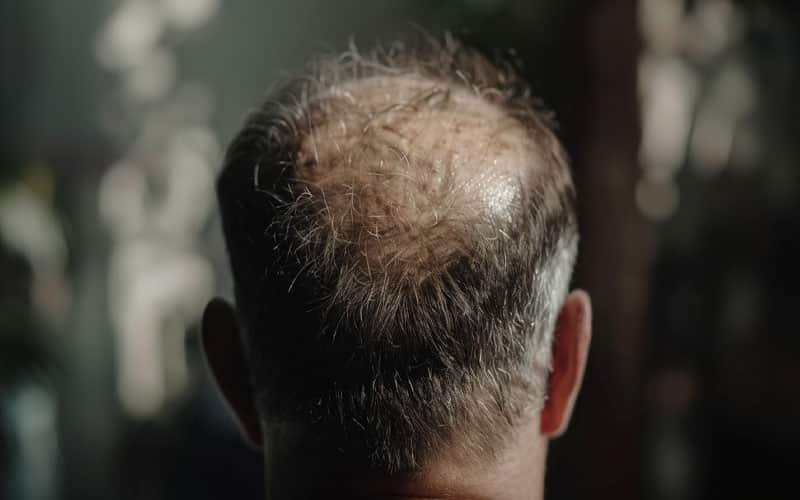In the quest for hair regrowth solutions, Low-Level Laser Therapy (LLLT) has emerged as a promising non-invasive treatment. However, for many individuals considering LLLT as a solution to their hair loss woes, a crucial question looms: is LLLT covered by insurance? This article seeks to unravel the complexities surrounding insurance coverage for LLLT in the context of hair regrowth. We’ll delve into the mechanics of LLLT, the role of insurance in healthcare coverage, and the specific factors influencing coverage eligibility for this innovative treatment.
Understanding insurance coverage for LLLT is paramount for those navigating the realms of hair loss treatment. By shedding light on this often misunderstood topic, we aim to empower individuals to make informed decisions about their hair regrowth journey while navigating the intricacies of insurance policies. Join us as we embark on a journey to decipher the mysteries of insurance coverage for LLLT and pave the way for individuals seeking effective solutions for hair regrowth.
Overview of Low-Level Laser Therapy (LLLT) for Hair Regrowth

Low-Level Laser Therapy (LLLT), also known as photobiomodulation or cold laser therapy, has garnered attention as a non-invasive approach to stimulating hair regrowth. This innovative treatment involves the use of low-power lasers or light-emitting diodes (LEDs) to irradiate the scalp with specific wavelengths of light.
The mechanism of action behind LLLT revolves around its ability to penetrate the scalp tissue and stimulate cellular activity within hair follicles. By enhancing blood circulation, promoting the production of adenosine triphosphate (ATP), and modulating cellular metabolism, LLLT is believed to revitalize dormant hair follicles, leading to thicker, fuller hair over time.
LLLT is typically administered through devices such as laser caps, helmets, combs, or brushes, which allow for convenient and targeted application to the scalp. Treatment sessions are painless and can be performed in the comfort of one’s home or under the supervision of a healthcare professional.
Scientific research supporting the efficacy of LLLT for hair regrowth continues to evolve, with numerous studies demonstrating its potential benefits for both men and women experiencing hair loss. While individual results may vary, many individuals report noticeable improvements in hair density, thickness, and overall scalp health following regular LLLT treatments.
Despite its growing popularity as a hair regrowth solution, LLLT is not a quick fix, and results may take several months to become apparent. Consistency and adherence to the prescribed treatment regimen are key to maximizing the benefits of LLLT for hair regrowth.
Is LLLT Covered by Insurance?
In the realm of healthcare options, the question of whether Low-Level Laser Therapy (LLLT) is covered by insurance looms large for many individuals seeking alternative treatments for various conditions. Despite the proven effectiveness of LLLT in addressing a wide range of medical issues, the landscape of insurance coverage for this therapy remains ambiguous.
Everyone navigates the complexities of insurance policies and billing practices, understanding the nuances of coverage for LLLT treatments becomes paramount. In this article, we delve into the intricacies of insurance coverage for LLLT, exploring the factors influencing coverage decisions, potential challenges faced by patients seeking reimbursement, and avenues for advocacy to promote broader recognition of LLLT as a reimbursable and accessible treatment option.
Does Insurance Cover Laser Therapy?

Insurance coverage for laser therapy treatments, including LLLT for hair regrowth, may necessitate pre-authorization and documentation of medical necessity. Research suggests that human gingival fibroblasts respond positively to laser therapy treatments, showing potential for promoting tissue regeneration and wound healing.
Insurance coverage for hair transplant procedures may vary depending on the individual’s policy and medical necessity, with some plans covering the treatment if deemed medically necessary by a healthcare provider. The healing process following hair transplant surgery typically involves several stages, including the initial recovery period, the establishment of new hair growth, and ongoing maintenance to ensure optimal results.
Protein synthesis is a fundamental biological process crucial for cellular function, including hair growth and regeneration. It plays a vital role in maintaining the health and strength of hair follicles, making it essential for optimal hair regrowth.
Injured tissue undergoes a complex healing process involving inflammation, tissue repair, and remodeling. Effective treatments, such as laser therapy, aim to accelerate this healing process by promoting cell regeneration and reducing inflammation, leading to improved tissue repair and recovery.
Importance of Insurance Coverage for LLLT Hair Regrowth

Financial Accessibility
LLLT treatments for hair regrowth can be costly, especially when multiple sessions are required over an extended period. Insurance coverage can make LLLT more financially feasible for individuals who may otherwise struggle to afford the treatment, ensuring that cost is not a barrier to accessing effective hair loss solutions.
Improved Affordability
Insurance coverage for LLLT reduces out-of-pocket expenses, making it more affordable for individuals seeking hair regrowth treatments. This can alleviate financial strain and make LLLT a viable option for individuals from diverse socioeconomic backgrounds.
Enhanced Treatment Access
Insurance coverage expands access to LLLT for hair regrowth by enabling individuals to seek treatment through healthcare providers and specialized clinics. It ensures that individuals can access the care they need without facing significant financial obstacles, thereby promoting timely intervention and better treatment outcomes.
Treatment Consistency
Knowing that LLLT is covered by insurance encourages individuals to adhere to the prescribed treatment regimen consistently. Consistency is key to achieving optimal results with LLLT, and insurance coverage facilitates this by removing concerns about the financial burden of ongoing treatment.
Reduction of Financial Stress
Dealing with hair loss can already be emotionally taxing, and financial concerns only add to the stress. Insurance coverage for LLLT alleviates this stress by providing reassurance that the cost of treatment is covered, allowing individuals to focus on their hair regrowth journey without worrying about the financial aspect.
Recognition of Medical Need
Insurance coverage for LLLT acknowledges the medical necessity of treating hair loss as a legitimate healthcare concern. It validates the importance of addressing hair loss issues and supports individuals in seeking appropriate medical interventions to improve their quality of life.
Factors Influencing Insurance Coverage for LLLT Hair Regrowth

Insurance Policy Terms
Insurance coverage for LLLT hair regrowth treatments can vary widely depending on the specific terms and conditions of an individual’s insurance policy. Some policies may include coverage for certain hair loss treatments, including LLLT, while others may not.
Medical Necessity
Insurance companies typically require evidence of medical necessity to approve coverage for LLLT. This may involve a diagnosis of a specific medical condition causing hair loss, such as androgenetic alopecia, and a recommendation from a healthcare provider for LLLT as part of the treatment plan.
Pre-authorization Requirements
Some insurance companies require pre-authorization before covering LLLT treatments. This process may involve submitting documentation from a healthcare provider detailing the medical necessity of the treatment and obtaining approval from the insurance company before proceeding with LLLT.
Provider Networks
Insurance coverage may be influenced by the network of healthcare providers contracted with the insurance company. Individuals may need to seek LLLT treatments from providers within their insurance network to ensure coverage or may face higher out-of-pocket costs if they choose providers outside the network.
Policy Exclusions and Limitations
Insurance policies may contain exclusions or limitations that impact coverage for LLLT hair regrowth treatments. For example, certain policies may exclude coverage for cosmetic procedures or treatments deemed experimental or investigational, which could affect coverage for LLLT.
Alternative Treatment Options
Insurance coverage for LLLT may be influenced by the availability of alternative treatment options for hair loss. If FDA-approved medications or procedures are available and covered by insurance, insurance companies may be less likely to cover LLLT unless it is deemed medically necessary or more effective than alternative treatments.
Cost-sharing Requirements
Even if LLLT is covered by insurance, individuals may still be responsible for cost-sharing expenses such as deductibles, co-payments, or co-insurance. The amount of cost-sharing required can vary depending on the insurance plan and may impact the overall affordability of LLLT treatments.
Exploring Insurance Plans and Coverage Options for LLLT Hair Regrowth

Insurance Plan Types
Individuals may have different types of insurance plans, including employer-sponsored health insurance, individual or family health insurance plans, state medical plans, or Medicaid. Each type of plan may have its own coverage options and requirements for LLLT hair regrowth treatments.
Health Insurance Coverage
Many health insurance plans offer coverage for medical treatments, including those for hair loss. Individuals with health insurance should review their plan documents or contact their insurance provider to determine if LLLT for hair regrowth is covered under their specific plan.
Dental Insurance Coverage
Some dental insurance plans may offer coverage for certain oral health procedures related to gum disease or other dental conditions that can contribute to hair loss. While LLLT is primarily a medical treatment, individuals with dental insurance may want to explore coverage options for related conditions.
Medicare & Medicaid Coverage
Medicare is a federal health insurance program primarily for individuals aged 65 and older, as well as younger people with certain disabilities. Medicare Part B may cover certain medically necessary treatments for hair loss, including LLLT, if prescribed by a healthcare provider.
Medicaid is a joint federal and state program that provides health coverage to low-income individuals and families. Coverage for LLLT hair regrowth treatments under Medicaid may vary depending on the state’s Medicaid program and specific eligibility criteria.
Supplemental Insurance
Some individuals may have supplemental insurance policies, such as Medigap plans or private supplemental insurance, to help cover healthcare costs not covered by Medicare or other primary insurance plans. Supplemental insurance may provide additional coverage options for LLLT treatments.
Health Savings Accounts (HSAs) and Flexible Spending Accounts (FSAs)
Individuals with HSAs or FSAs may be able to use funds from these accounts to cover eligible medical expenses, including LLLT for hair regrowth. However, eligibility and coverage may vary depending on the specific terms of the HSA or FSA.
Alternative Coverage Options
In addition to traditional health insurance plans, individuals may explore alternative coverage options such as discount medical plans or membership programs that offer reduced rates for certain healthcare services, including LLLT treatments for hair regrowth.
Individuals who do not have insurance coverage for LLLT hair regrowth treatments or who prefer not to use insurance may choose to pay for treatments out-of-pocket. Some healthcare providers may offer payment plans or financing options to make LLLT more affordable for a self-pay patient.
Exploring Alternative Financing Options if LLLT is Not Covered by Insurance

Health Savings Account (HSA) or Flexible Spending Account (FSA): HSAs and FSAs provide a tax-advantaged way to save for medical expenses. Contributions to these accounts can be used to cover various healthcare costs, such as laser therapy covered under qualified medical expenses. Utilizing an HSA or FSA allows individuals to allocate funds for treatments aimed at hair loss treatments or promoting hair growth, such as low-level laser irradiation therapies.
Payment Plans or Financing Options: Many healthcare providers offer flexible payment plans or financing options for patients seeking LLLT treatments. These arrangements enable individuals to spread the cost of treatment over time, making it more manageable and accessible. Patients can inquire about available financing options to help reduce pain and achieve their desired outcomes without the constraints of insurance cover laser therapy limitations.
Medical Loans: Medical loans are an option for individuals seeking to finance LLLT treatments not covered by insurance. These loans can be used to cover various medical expenses, including hair growth therapies and medical trials involving laser light technologies. Medical loans typically offer competitive interest rates and flexible repayment terms, providing patients with the financial support needed to pursue beneficial treatments.
Healthcare Credit Cards: Healthcare credit cards, like CareCredit, offer a convenient way to finance healthcare expenses, including LLLT treatments. These cards may offer promotional financing options to help individuals manage the cost of treatment effectively. Patients can use healthcare credit cards to cover the expenses associated with hair loss treatments or participate in patient trials investigating the efficacy of laser light therapies.
Crowdfunding or Fundraising: Crowdfunding platforms provide a means for individuals to raise funds for medical expenses, including hair loss treatments. Patients can leverage these platforms to share their stories and garner support from friends, family, and the community. Crowdfunding efforts can help cover the costs of hair growth treatments or participation in clinical trials focused on laser therapy.
Grants or Scholarships: Some organizations offer grants or scholarships to support individuals seeking alternative treatments like LLLT. These funding opportunities may cover expenses related to hair loss treatments or hair growth therapies involving laser light technologies. Patients can explore grants and scholarships to offset the financial burden of pursuing beneficial treatments not covered by insurance.
Negotiate Rates or Discounts: Patients can negotiate rates or request discounts from healthcare providers offering LLLT treatments. Providers may be willing to accommodate patients’ financial circumstances by offering reduced rates or waiving certain fees. Negotiating rates or discounts can help make LLLT more affordable and accessible to individuals seeking to improve their health and well-being.
By exploring these alternative financing options, you may find ways to cover the cost of LLLT treatments even if they are not covered by insurance. Be proactive in researching and pursuing options that best suit your financial situation and healthcare needs.
Frequently Asked Questions

Is LLLT covered by all insurance plans?
No, coverage for Low-Level Laser Therapy (LLLT) varies among insurance plans. Some plans may cover LLLT for certain medical conditions, while others may not include it in their coverage.
What medical conditions are typically covered by insurance for LLLT?
Insurance coverage for LLLT may be available for conditions such as chronic pain management, musculoskeletal injuries, and certain dermatological conditions like alopecia.
How can I find out if my insurance covers LLLT?
To determine if LLLT is covered by your insurance plan, review your policy documents or contact your insurance provider directly. They can provide information on coverage criteria and reimbursement rates for LLLT treatments.
What if my insurance does not cover LLLT?
If LLLT is not covered by your insurance, consider exploring alternative financing options such as payment plans, medical loans, or crowdfunding to help cover the cost of treatment.
Are there any clinical trials or research studies investigating the effectiveness of LLLT?
Yes, there are ongoing clinical trials and research studies examining the efficacy of LLLT for various medical conditions. Participation in these studies may offer access to LLLT treatments at reduced or no cost.
Can I appeal a denied insurance claim for LLLT?
Yes, if your insurance claim for LLLT is denied, you have the right to appeal the decision. Work with your healthcare provider to gather additional documentation and submit an appeal to your insurance provider. However, please know it is not common for insurance to cover androgenic alopecia treatments with laser therapy.
Will Insurance Cover Hair Loss Treatments like LLLT?

In conclusion, navigating insurance coverage for Low-Level Laser Therapy (LLLT) requires understanding the complexities of insurance policies, coverage criteria, and reimbursement processes. While some insurance plans may cover LLLT for certain medical conditions, others may not include it in their coverage.
Patients seeking LLLT treatments should review their insurance policies, inquire about coverage options, and explore alternative financing options if LLLT is not covered by insurance. Additionally, participation in clinical trials or research studies may offer access to LLLT treatments at reduced or no cost. By advocating for coverage and exploring all available options, patients can maximize their chances of accessing this beneficial treatment option for various medical conditions.


